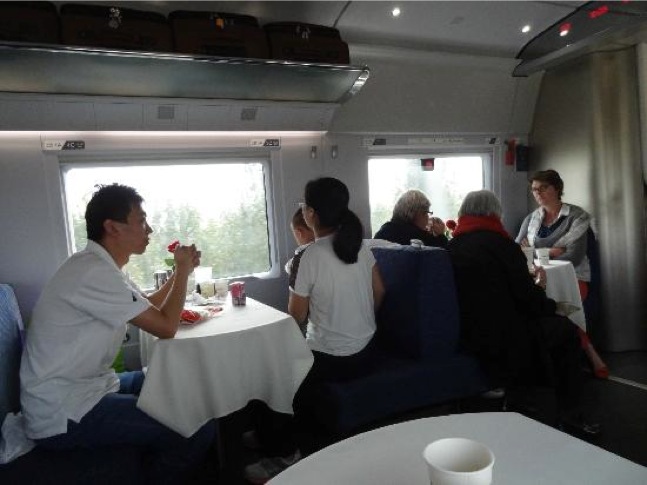




As flying in America becomes increasingly unpleasant, no thanks to the TSA, some have suggested high speed rail as an alternative to flying and driving. Unfortunately, due to the tremendous distance between most metropolitan areas, the cost per mile is impossible to justify. A level of population density along most of the track is required to justify the staggering cost of such projects which is why Amtrak’s high-speed Acela only operates in the northeastern United States.
Additionally, American tracks are privately owned and maintained by cargo carriers, limiting their maintenance to viable cargo routes. Amtrak is given low-priority access, forced to park as cargo trains go by, putting passenger trains behind schedule. Constant electrical and mechanical breakdowns, collisions with cars, and inclement weather further reduce the appeal of traveling by train.
The video below depicts what appears to be a locomotive emerging from the woods like a bear that rose from hibernation, tiptoeing through dense vegetation as it bounces back and forth. The track is warped like a vinyl record left on the sidewalk on a hot summer day, forcing speeds below 10mph. The Federal Railroad Administration would call this “FRA Excepted,” meaning:
(1) No train shall be operated at speeds in excess of 10 m.p.h.;
(2) No occupied passenger train shall be operated;
(3) No freight train shall be operated that contains more than five cars required to be placarded by the Hazardous Materials Regulations (49 CFR Part 172); and
(4) The gage on excepted track shall not be more than 4’10¼ inches.
Fast Tube by Casper
This particular line hasn’t been serviced since 1964 but a recent acquisition by the Pioneer Rail Corporation promises repairs and upgrades that will properly connect nearby businesses to the rest of national rail network.
Fast Tube by Casper
Just for fun, here’s footage of a slow-speed derailment captured by a rail fan in Louisiana:
Fast Tube by Casper
Still, despite the appalling conditions of a handful of local railroads and the rare accident, American freight rail is an astounding success. Privately owned and maintained, the efficiency of freight rail has been a positive for the environment as they tend to be more efficient per mile than trucking, a boon to automakers, and a big positive for American manufacturers seeking access to ports for exports.
Not long after airlines were deregulated, the same happened in the early 1980s, encouraging consolidation, cost savings, and improved upkeep. By eliminating heavy-handed federal intervention, freight costs fell significantly, providing a boost to the American economy by reducing logistical costs and quietly stemming inflation, making goods more affordable to American consumers. Compared to Japan and Europe, Americans enjoy significantly lower rates.
—————————————

Yes, the idea of high speed passenger rail taps into romantic notions of effortless, stress-free continental travel, but the stark reality is that the jet airplane is faster and more efficient for moving humans from place to place. As much as I would enjoy sipping a cup of Earl Grey in a comfy chair while reading The Economist on my iPad at 200mph, the cost of doing so would be outrageous for most parts of the United States.
This is a big country. Big countries require big, high-speed solutions. The 550mph jet aircraft wins the race for now.
Leave a Reply